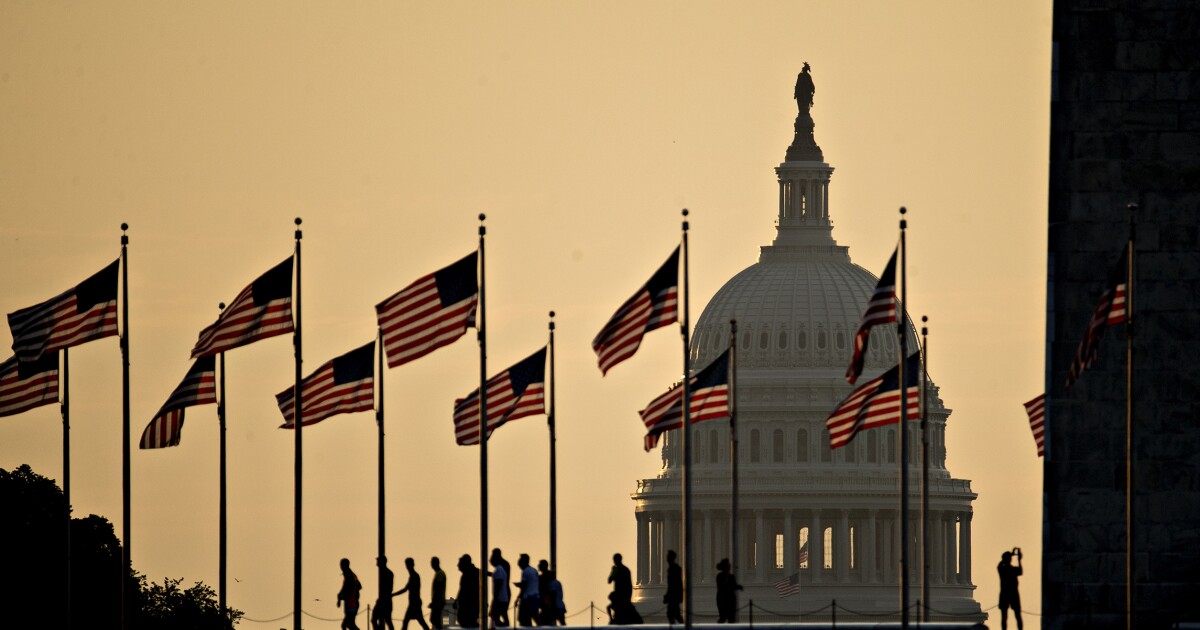

While any debt ceiling bill is now expected to feature caps on federal spending, history shows that those limits might end up being increased in the years after the deal.
The White House and Republicans are getting closer to a deal to raise the country’s $31.4 trillion debt ceiling, and reports have emerged that a deal would cap federal spending for two years. Republicans have demanded spending cuts.
WHITE HOUSE NOT BUDGING ON WORK REQUIREMENTS, CAUSING AN IMPASSE IN NEGOTIATIONS
The last time Congress imposed spending caps as part of a deal to raise the debt ceiling, some of those spending limits ended up altered during successive sessions of Congress.
During the worst debt ceiling standoff in recent history, in 2011, Republican negotiators secured a deal that included $917 billion in spending cuts over a 10-year period as part of the Budget Control Act of 2011.
It is worth noting that the debt ceiling spending cap would pertain only to discretionary spending, which includes things such as federal rental assistance, grants for schools in low-income communities, research funding, and weapons programs. It doesn’t include mandatory spending for programs such as Social Security and health programs, which comprises about 70% of total federal spending.
While the 2011 legislation established limits on the amount of discretionary spending that could be allocated each fiscal year, the White House and Congress subsequently enacted legislation that increased the spending limits.
The increases in the spending limits came in 2013, 2015, 2018, and 2019 under both Democratic and Republican administrations.
The 2011 legislation also included a provision that created the Joint Select Committee on Deficit Reduction, known as the “super committee,” which was tasked with trimming $1.2 trillion of the deficit over 10 years. When the committee didn’t act, it triggered an automatic enforcement mechanism known as sequestration — that entailed across-the-board spending cuts.
The increases to the spending limits in the decade after 2011 counteracted some or all of the reductions that occurred as part of the sequester, according to the nonpartisan Congressional Research Service.
Still, it is worth noting, as the CRS did, that spending was lower each year between 2012 and 2019 than had been originally projected to be before the Budget Control Act was enacted.
So if the past is any guide, the spending cuts in this agreement might end up being altered in the future.
“We have to remember the deal is only for purposes of getting something done now, it doesn’t mean something won’t be changed in the future,” Brian Marks, executive director of the University of New Haven’s Entrepreneurship and Innovation Program, told the Washington Examiner.
Marks also pointed out how a big part of the negotiations is political — both sides want to score the best-sounding deal they can sell to their constituents.
“This is all about politics and it’s, in some senses, less about economics and more about the politics of economics,” he said.
The current standoff over the debt ceiling is the closest the U.S. has come to a technical default since the 2011 fight.
Reports emerged on Thursday that the Treasury Department is preparing a contingency plan for prioritizing payments on the government’s obligations should the debt ceiling be breached.
The blueprint would delay some payments to federal agencies after June 1, the date that the department expects it will exhaust its borrowing authority, according to the Wall Street Journal. The contingency plan reportedly mirrors preparations made by the Obama Treasury during the 2011 debt ceiling fight, which were only made public years after the 2011 negotiations.
This time around, negotiators have been working around the clock to craft a deal.
As part of the framework being discussed, Congress would lift the debt ceiling for the next two years while keeping defense spending at the levels proposed by President Joe Biden in his fiscal 2024 budget.
Still, there are some sticking points that have yet to be ironed out. Republicans already passed a partisan debt ceiling bill, which contained a wish list of asks. That proposal included beefing up work requirements for Medicaid and for the Supplemental Nutrition Assistance Program, known as food stamps.
CLICK HERE TO READ MORE FROM THE WASHINGTON EXAMINER
“The last one we had was in 2011 and, looking back on it, that was relatively mild,” said Joseph Cordes, an economics professor at George Washington University. “The main difference is a political one, I think. The actors in 2011 were not as dug into their positions as they seem to be right now.”
“So I would say this is more serious,” he said of the current situation.




